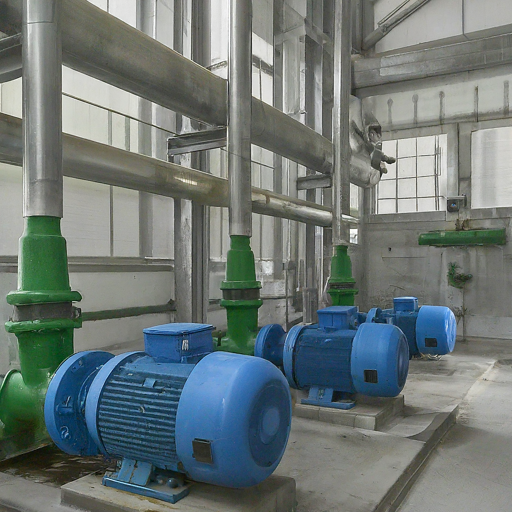When two vibrations with similar frequencies occur together, a phenomenon called “beating” takes place. This is like hearing two musical notes that are slightly out of tune – the combined sound gets louder and softer in a rhythmic pattern. In industrial settings, beating caused by nearby machines can lead to severe vibrations, even machine failure. It’s crucial to minimize the effects of beating, even if the root cause can’t always be eliminated.
Beating Vibration Impact on Pumping Station
At a pumping station, the operators noticed strong vibrations in both the machinery and the building itself. They suspected the pump and the building’s foundation were to blame. The vibrations seemed to be connected to how the pump was operated and only happened when the pump was working at high output.

Vibration analysis revealed several issues contributing to the problem:
- Pumping Station Layout: The station used three centrifugal pumps running at different speeds. Pumps 2 and 3 had high vibration levels at high output, particularly at the first order (rotational frequency) in the vibration spectrum. Beating was also observed in the building vibrations.

- Unbalance: The analysis showed significant rotational vibrations as the motor speed increased. Inspection revealed problems with keys in the couplings, which were either protruding or missing.
- Critical Speed: The motor had natural frequencies within its operating speed range. It passed through a bending critical speed of around 3600 rpm, causing a sharp increase in vibration amplitudes.
Solutions and Recommendations
- Coupling Correction: The issues with the coupling keys were addressed.
- Precision Balancing: The motor was precision balanced, which reduced vibration amplitudes and eliminated beating in the building. However, some beating remained at the critical speed, making continuous operation at that speed inadvisable.
- Motor Replacement: It was recommended to either rebuild the system extensively or replace the motor with one that doesn’t have natural frequencies within the operating speed range. New pump motors should meet international standards such as the EN ISO 13709 standard. It is a standard that provides mechanical vibration guidelines for rotating and reciprocating machinery.
By understanding and addressing the root causes of the vibration problems, the pumping station can operate more efficiently and reliably, minimizing the risk of damage and downtime.





